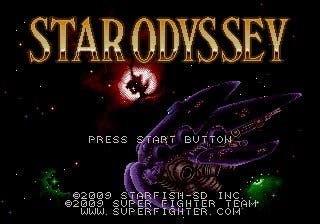Rising from the Grave
The story behind this year's new Mega Drive game.
When Sega pushed its Mega Drive console onto Japanese store shelves back in October 1988, Ronald Reagan was the President of the United States, the Iraq-Iran war had just concluded with the tragic loss of over million lives and in less than a month's time IT users would find themselves reeling from the introduction of the first internet worm (named 'The Morris Worm' after its inventor, Robert Tappan Morris.)
In the twenty-three years that have elapsed since Sega's 16-bit machine saw the light of day, the world has altered irrevocably, yet this year has just witnessed the professional publication of a new piece of software for this seemingly long-dead gaming platform - and the most amazing thing of all is that this isn't the first but the third such release from American company Super Fighter Team. One might instantly assume this is some kind of bedroom-based coding group, but in fact Super Fighter Team are a fully-fledged business - their games even come complete with proper packaging and full-colour instruction manuals.
However, getting to this point hasn't been a straightforward process, as the firm's founder and president Brandon Cobb is keen to point out. The company's genesis and indeed its moniker are based around a Taiwanese PC brawler by the name of Super Fighter. A lifelong fan of the game and keen to spread its renown in the West, Cobb approached the original creators C&E in the hope that they would allow him to spin off an American arm of the company.
"But C&E President John Kuo told me that the name might cause some confusion with their accounting," Cobb explains with a smile. "I finally settled on the name Super Fighter Team because it would allow us the freedom to pursue any product, in cooperation with any company, while always paying homage to the game that inspired us to start our work in the first place."

Establishing a business from scratch is a daunting prospect for any self-respecting entrepreneur, and it didn't take long for problems to arise. "We were planning out a sequel of sorts to Super Fighter for the Game Boy Advance," Cobb elaborates. "We were all young and inexperienced, and budget constraints quickly became a problem. By sheer coincidence, I became aware of a role-playing game C&E had released, only in Taiwan, for the Mega Drive. I set my sights upon this RPG as the 'saviour' of our fighting game project. The aim was to translate the RPG into English, adapt it for the Game Boy Advance and use the sales revenue to continue development of Super Fighter Advance."
As enticing as this solution appeared to be on paper, Cobb admits that he had personal reservations from the off. "When it came down to it, I couldn't bring myself to have the RPG squashed down to the reduced screen resolution of the GBA; I felt it would ruin the experience." Instead, Cobb and his team would do the unthinkable - they decided to professionally localize the game for the system it was originally developed for: the Sega Mega Drive. "It's something that was unheard of at the time," he explains.

"We would manufacture and sell the game as a brand new cartridge, complete with box and manual. Despite many people thinking we were crazy for even considering the idea, we accomplished the impossible. That RPG - which we named Beggar Prince - was released worldwide on May 22, 2006. It was the first new game to be published for the Mega Drive since 1998."
Since then, Super Fighter Team has produced another Mega Drive RPG in the form of Legend of Wukong, as well as games for the Atari Lynx and Nokia N-Gage. However, Star Odyssey is possibly the firm's most notable undertaking yet, as it's a game that was tantalizingly close to being officially published in the west twenty years ago.
Originally released in its native Japan in 1991 as Blue Almanac, this Phantasy Star-style turn-based RPG game was snapped up by US company Sage's Creation with view to an English-language release; such was the faith in the conversion that print advertisements were taken out in North American magazines. For whatever reason, it never happened and Star Odyssey was largely forgotten until Cobb recently happened to stumble across an English-language prototype whilst chatting with a fellow retro collector.

